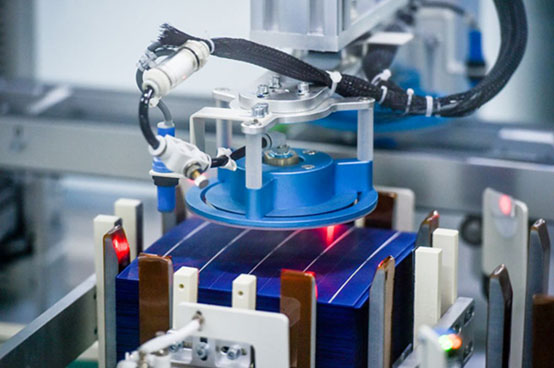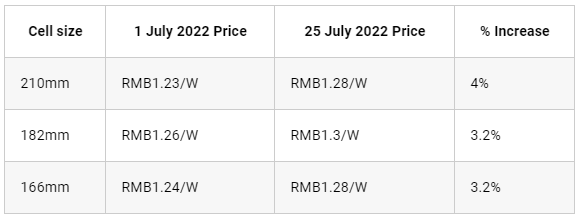Solar wafer, cell prices rise as reports suggest state intervention could be near.

Solar wafer and cell prices have risen once again this week, with the price of polysilicon continuing to climb unabated.
This week’s average polysilicon price stood at around RMB296/kg – including China’s 13% sales tax, or RMB262/kg (US$38.76/kg) without it – as prices increased by around 3% on last week.
Prices have now risen each week for nearly three straight months, driven by a combination of strong demand, planned maintenance and incidents taking some production capacity offline. Prices are expected to continue rising through August until maintenance schedules complete and facilities restarted, raising the prospect that prices will break through the RMB300/kg barrier.
Some reports have, however, suggested that the Chinese government could be considering an intervention into polysilicon pricing. Numerous local reports have suggested China’s Ministry of Industry and Information Technology (MIIT) is exploring its options regarding a possible intervention, however it is unclear what shape this may take.
In late 2020, when the price of solar glass spiked to such an extent PV module manufacturers sought an intervention, the MIIT enacted a suite of measures designed to release new production capacity quicker.
The pinch in polysilicon pricing has continued to driver solar component costs higher, with both LONGi and Tongwei confirming increases to wafer and cell prices respectively this week.
LONGi increased the prices for its solar wafers by between 3.2 and 4.2% for August, continuing a monthly trend for wafer prices to rise on the back of polysilicon costs.

LONGi wafer prices June versus July 2022
Tongwei too has enacted price rises of between 3.2% and 4% as of this week, as the below chart highlights.

Tongwei cell prices June versus July 2022


